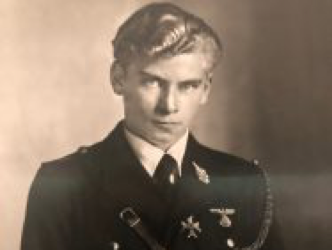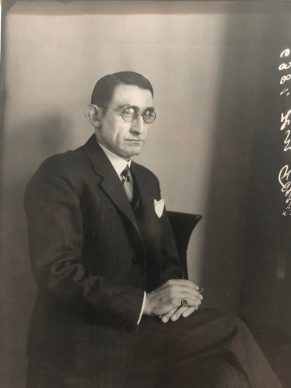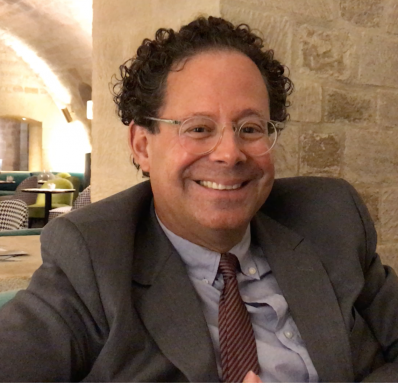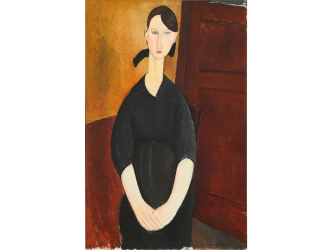It’s a huge shock. It’s a major exhibition driven by a universal message.
It’s a piece of the history of modern art.
In Paris there’s a place that is little known for its exhibitions, the Shoah Memorial located in the Marais district, well worth visiting for the place alone (1), which is holding an exhibition of 120 photographs, some never before seen, by one of the artists who has proved fundamental to twentieth-century art: August Sander.
As it happens, the multinational Hauser & Wirth gallery in London is also currently displaying August Sander, with a series of works printed at the time in large format in 1973 to promote a book entitled “Men Without Masks”.
The prints were made by August Sander’s son.
So there was once a German photographer called August Sander (1876-1964), based in Cologne from 1910, who pioneered a form of imagery that was precise, and documentary as opposed to purely aesthetic, contrary to the fashion of the time.
In the 1920s he embarked upon a project that would become vast and sprawling: “People of the 20th Century”, a kind of encyclopaedia of the German nation in images, initially made up of 7 large sections denoting the professions and different social classes of his country.
He expanded the study between 1939 and 1945 to include, among others, the Nazis and their victims.
What followed was that in 1952 Sander was visited by Edward Steichen, the great photographer and then director of the photography department at Moma, who recognized the importance of the German artist’s work and exhibited 45 of his prints in New York.
Sander’s work is crucial on several counts:
– Firstly for his documentary style.
– Next for the dialogue he establishes between the different portraits: it’s in the assemblage of the exhibition that his oeuvre becomes about the interactions at the heart of a group of images.
– Lastly for the huge breadth of this work, which takes as raw material the population of an entire country. The contemporary German photographers Bernd and Hilla Becher, who were known for their series and would go on to influence an entire generation of German artists, are direct heirs of Sander.
The big event is that the Shoah Memorial, on the initiative of the curator Sophie Nagiscarde, is exhibiting until 15 November a major photography series never before displayed as it is: Persecuted/Persecutors.
Portraits of the Nazis, the Hitler youth and soldiers are displayed opposite their victims, most of them members of the German Jewish community in Cologne but also including the mentally ill or political opponents, one of whom was Sander’s son, Erich, who would fall victim to the Nazis.
Sophie Nagiscarde explains the idea behind holding the exhibition in a place like this:
There’s no other way of putting it, the Nazis really are as ugly as sin; you can hardly bear to look at them. And therein also lies Sander’s genius.
The semi-circular layout of these photographs that places the executioners in confrontation with their victims produces a powerful effect.
I had a telephone conversation with Gerd (born in 1940), grandson of August, who now lives in Normandy.
He lived with his grandfather from the age of 6 who brought him up and nurtured in him a love of photography, teaching him how to make prints, a job he performed from 1989 to 2015.
Today he is working on his biography and a large-scale Sander exhibition in 2020 at Moma in New York.
“At the Sao Paulo Biennial in 2012 we displayed 619 prints by Sander, which also included the persecutors and persecuted series.
But in Paris this confrontation is being shown by itself for the first time. I think up until now people haven’t been ready. And they still aren’t in Germany, even today”.
In 1958 August Sander used a quote by Goethe: “I have made it a law to act according to my inner law, regardless of the light it casts on me and whether or not it may be misunderstood.”
August Sander, a photographer who showed not only bravery, but also genius.
Until 15 November: www.memorialdelashoah.org
(1) One floor is dedicated to the fate of the Jews in France during the Second World War and features an affecting hut from the camps at Beaune-la-Rolande, where the Jews who were rounded up in France were crammed in before being sent off to the concentration camps. This little wooden hut resembles, for contemporary art lovers, an artist’s installation seeking to bear witness…
Donating=Supporting

Support independent news on art.
Your contribution : Make a monthly commitment to support JB Reports or a one off contribution as and when you feel like it. Choose the option that suits you best.
Need to cancel a recurring donation? Please go here.
The donation is considered to be a subscription for a fee set by the donor and for a duration also set by the donor.


















